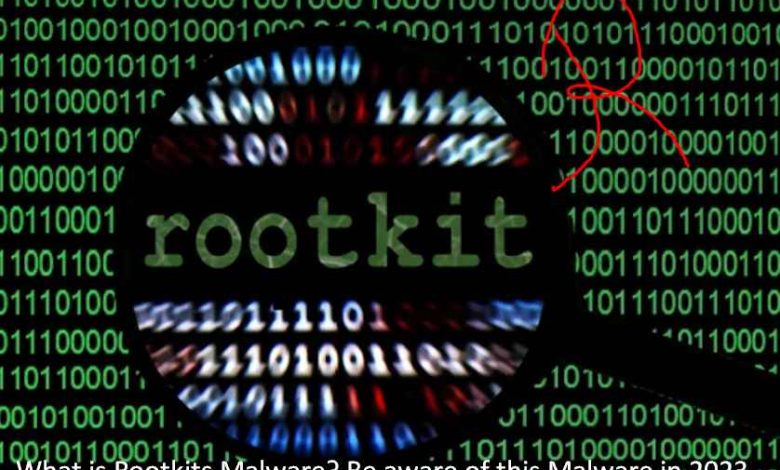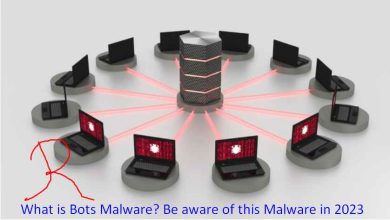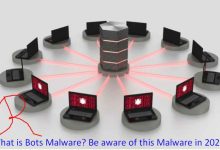What is Rootkits Malware? Be aware of this Malware in 2023


Introduction
In the realm of cyber threats, rootkits malware stands as a particularly insidious and stealthy form of malicious software. As we enter 2023, the risks posed by rootkits continue to grow, making it essential to understand this type of malware and the measures to protect against it. This article will delve into what rootkits malware is, how it operates, signs of infection, its history, and the future implications of this dangerous cyber threat. Free Make Money Online
Understanding Rootkits Malware
Definition of Rootkits
Rootkits are a class of malware designed to conceal themselves and their malicious activities on an infected system. They take root at the deepest level of an operating system, giving cybercriminals extensive control over the compromised device…(Article Rewriter)(Plagiarism Checker)
How Rootkits Work
Rootkits gain unauthorized access to a system, often exploiting software vulnerabilities. Once inside, they cloak their presence, making them challenging to detect using traditional antivirus software.
Types of Rootkits
There are several types of rootkits, including:
- Kernel Mode Rootkits: Operate at the kernel level of the OS and have the highest level of privilege.
- User Mode Rootkits: Operate at the user level and have fewer privileges but are harder to detect.
- Bootkits: Infect the Master Boot Record (MBR) or the boot sector to execute during system startup.
The History of Rootkits
Early Instances of Rootkits
The concept of rootkits dates back to the early 1990s, with the “SunOS” rootkit being one of the first known instances. It targeted Sun Microsystems’ Unix-based systems.
Notorious Rootkit Attacks
In 2005, the Sony BMG rootkit scandal drew significant attention when it was revealed that Sony’s music CDs contained a rootkit to protect against piracy, inadvertently exposing millions of users to security risks.
Signs of a Rootkit Infection
Concealment and Persistence
Rootkits excel at hiding themselves and maintaining persistence on an infected system, making them challenging to detect and remove.
Strange System Behavior
Unexplained crashes, slow performance, and unusual errors are common signs of a rootkit infection.
Unusual Network Activity
Rootkits may allow unauthorized remote access, leading to suspicious network communications.
Sources of Rootkit Infections
Drive-by Downloads
Visiting compromised websites can trigger drive-by downloads, infecting a user’s system with a rootkit.
Infected Email Attachments
Opening malicious email attachments can deliver rootkits onto a victim’s device.
Compromised Websites
Hackers can compromise legitimate websites to distribute rootkits through malicious downloads.
Protecting Your Devices from Rootkits Malware
Use Reliable Antivirus Software
Invest in reputable antivirus software capable of detecting and removing rootkits.
Keep Your System Updated
Regularly update your operating system and software to patch vulnerabilities that rootkits exploit.
Be Cautious with Downloads and Links
Exercise caution when downloading files or clicking on links, especially from unknown sources.
Removing Rootkits Malware
Utilizing Rootkit Detectors
Specialized rootkit detectors can aid in identifying and removing rootkits from infected systems.
Manual Removal
Advanced users may attempt manual removal, but this requires deep technical knowledge and can be risky.
Seeking Professional Help
For severe infections, seeking assistance from cybersecurity experts is advisable.
Case Studies: Infamous Rootkit Attacks
Sony BMG Rootkit Scandal
Sony’s ill-fated attempt at preventing piracy led to a massive rootkit exposure and widespread criticism.
Stuxnet – The Cyber Weapon
Stuxnet, a sophisticated worm, used rootkit techniques to sabotage Iran’s nuclear program in 2010.
The Future of Rootkit Attacks
Evolving Evasion Techniques
Rootkits will likely adopt more sophisticated techniques to evade detection and maintain persistence.
Targeting IoT Devices
As the Internet of Things (IoT) grows, rootkits may target connected devices, posing significant threats to smart homes and industries.
Ransomware with Rootkits
Combining ransomware with rootkits could result in even more devastating cyberattacks.
Conclusion
As the digital landscape evolves, so do the threats posed by rootkit malware. Being aware of how rootkits work, their history, signs of infection, and prevention measures are crucial to safeguarding our digital lives in 2023 and beyond. By staying vigilant, regularly updating our security measures, and seeking professional help when needed, we can mitigate the risks posed by this stealthy and dangerous cyber threat.
FAQs
- Can rootkits infect all types of operating systems? Yes, rootkits can target various operating systems, including Windows, macOS, and Linux.
- Can traditional antivirus software always detect rootkits? No, rootkits’ sophisticated hiding techniques can evade traditional antivirus scans. Using specialized rootkit detectors is recommended.
- Are rootkits only used for spying and data theft? Rootkits can be used for various malicious purposes, including spying, data theft, remote control, and facilitating other cyberattacks.
- Is it possible to remove a rootkit without reinstalling the operating system? In some cases, yes. However, complete removal can be challenging, and reinstalling the OS is often the most effective solution.
- How can I protect my IoT devices from rootkit infections? Secure your IoT devices with strong passwords, keep firmware up-to-date, and use network segmentation to isolate them from critical systems.






